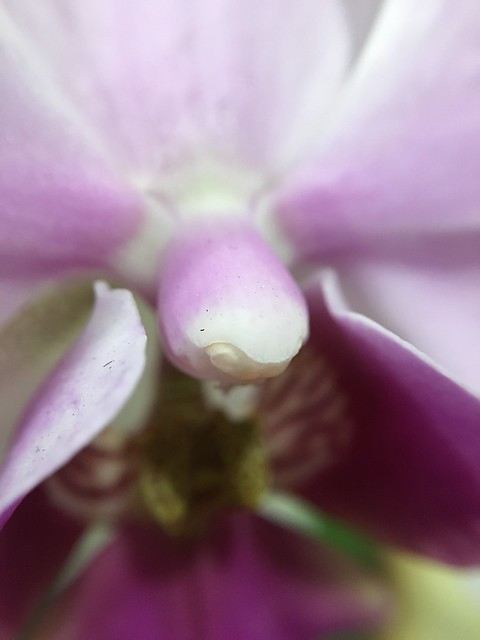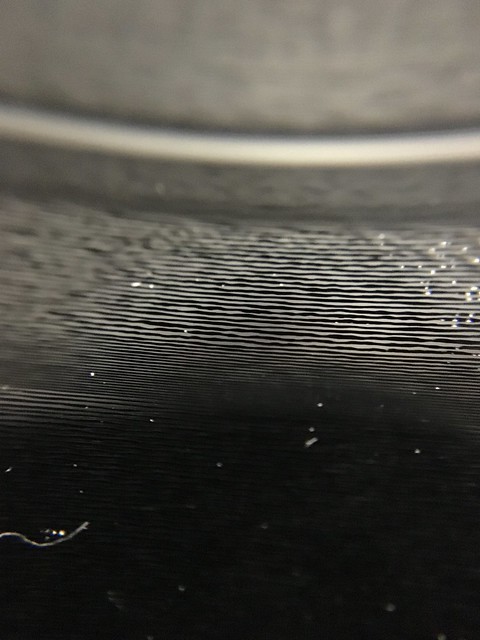In his 2007 film Zodiac, David Fincher precisely controls the visual aspects of film language to drive story action, develop characterisation and convey meaning. A formal analysis of a single shot, which occurs at timecode 02:19:04 on the Director’s Cut Blu-ray version of the film, reveals the contribution of lighting, colour, focus and staging to the overall experience of the shot and the meaning it conveys. In the scene, Robert Graysmith (Jake Gyllenhaal) visits Bob Vaughn (Charles Fleischer) after receiving an anonymous tip that a former workmate of Vaughn’s may be the Zodiac killer, with handwriting evidence linking the workmate to the Zodiac’s letters. During a conversation in Vaughn’s kitchen, which immediately precedes the shot being analysed in this essay, Graysmith learns that the handwriting sample actually came from Vaughn and not the workmate, implying that Vaughn himself may be the killer.
In the shot that follows, by meticulously controlling the visual properties of the frame in the context of the scene and the film as a whole, Fincher suddenly and immediately evokes the mood and atmosphere of a thriller. After over one hour without seeing a murder on screen, the audience is manipulated by a combination of cinematography and mise-en-scène to believe that the Zodiac killer may spring back into activity by striking against the film’s main character.
Taken in isolation, the most immediately identifiable characteristic of the shot is its extremely dark, low contrast lighting and slightly yellow hue. The colour yellow has a centrally important meaning in the visual style of Zodiac, and this meaning changes in the context of various scenes and time periods throughout the film. In early scenes in the San Francisco Chronicle newsroom, yellow (along with similar colours orange and brown) are warm visual signifiers of the 1960s and 1970s, the retro colour palette helping the film establish its setting and year. By the time the film arrives at the scene set in Vaughn’s house, which occurs in 1979, yellow has been stripped of its nostalgic properties and is now more strongly connotative of bruising and decay, as the toll of investigating the Zodiac killer begins to destroy the lives of those investigating him. By grading this scene with a dark yellow tint, Fincher further illustrates the damaging frustration and obsession that has gripped Graysmith while also drawing visual parallels to the murder scene that opens the film, which is similarly depicted in shadowy yellow tones.
In terms of staging, the shot is deliberately composed to convey a change in the power relationship between the two characters. Before Graysmith realises that Vaughn might be dangerous, they are shot in a relatively standard manner and roughly on equal terms — medium shots follow the dialogue from one character to the other as they discuss the handwriting evidence in Vaughn’s kitchen. But in contrast to the earlier shot, after his realisation Graysmith is placed in the foreground to the far right of screen and shot in close-up, taking up roughly fifty per cent of the frame. Behind him, to the left of the frame, Vaughn stands deep in the background over Graysmith’s shoulder. The shot is photographed with a shallow depth of field to keep Graysmith perfectly sharp while Vaughn is almost completely out of focus, his dark brown and grey costume blending in with the dark background. Graysmith is clearly the most visible subject of the shot, but Vaughn looms over it in such a way that he controls the action and demands the audience’s attention. This shot would likely have been photographed with a long focal length through a telephoto lens, which in addition to a shallow focal plane also has the effect of visually compressing the depth of the composition and making it appear to the audience as if Vaughn is mere centimetres behind Graysmith, when he’s actually metres away.
The combined result of all these visual choices is that Vaughn looks as though he is towering over Graysmith’s shoulder, watching over him like a hunter stalking its prey. This heightens the sense of imminent danger and also plays into the genre associations the audience is being manipulated to make. The shot lingers on Graysmith’s face and eyes in close-up as they dart from side to side, emphasising his fear and paranoia as he starts to put together what he’s just learned, realising that he’s stumbled into danger and trying to figure a way out. His hair and make-up is styled in such a way that a mixture of sweat and rain glistens on his forehead and facial features, visually separating him from the darker surrounding of the frame and emphasising that he is foreign to this environment, an interlocutor who is no longer in control of what happens to him.
Approximately three seconds into the shot, Vaughn indicates that he wants them both to go downstairs and turns on the basement light, which throws a flood of diegetic yellow light into the background of the scene. Previously the shot had been lit primarily from above, which gave each character’s face sunken features and a death-like quality. The basement light hits Vaughn entirely on the left-hand side of his face as it streams out of the basement from the extreme left of screen, without producing any significant change in the lighting on Graysmith’s face. The right-hand side of Vaughn’s face plunges even further into shadow, distorting his features and making him appear even more obscured and menacing in the background. This reinforces the character’s mystery, as neither Graysmith nor the audience can yet tell what his true intentions are. The light from the basement also creates a vertical line of shadow that bisects the frame between the two characters, enclosing each in a small, tight square of space. This foreshadows Graysmith’s confinement in the remainder of the scene, as he finds himself locked into a potentially dangerous situation without any obvious way out.
These visual signifiers rely on the audience’s familiarity with the thriller genre and some of its associated tropes to be effective — particularly the idea that basements are dangerous places with no escape, that villains are generally lit with dramatic shadows, and that breaking into a sweat is associated with fear. At nine seconds long the shot is the longest in the whole scene, and the spacious shot duration allows the dark mood and negative associations to settle over the frame slowly, giving the audience a sinking feeling to go along with Graysmith’s. Had Fincher cut away at any point during the shot it could have undercut the moment of emotion and empathy that slowly builds as Graysmith realises his predicament. By looking directly at Graysmith’s eyes, shot from a level angle, head-on direction and in close-up, the audience is directed to experience the scene from his perspective, and left there for several seconds of agony.
In a film that is generally concerned with power, control and unfulfilled obsessions, with a main character that systematically pieces together a case from disparate and conflicting sources, it’s the first time Graysmith feels like he’s not completely in control. Due to precise manipulation of cinematography and mise-en-scène, it’s also the first time in over an hour that the audience feels the same way.

















